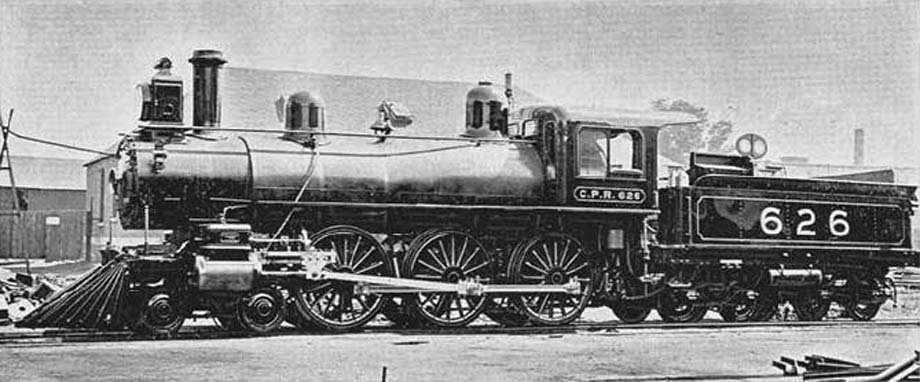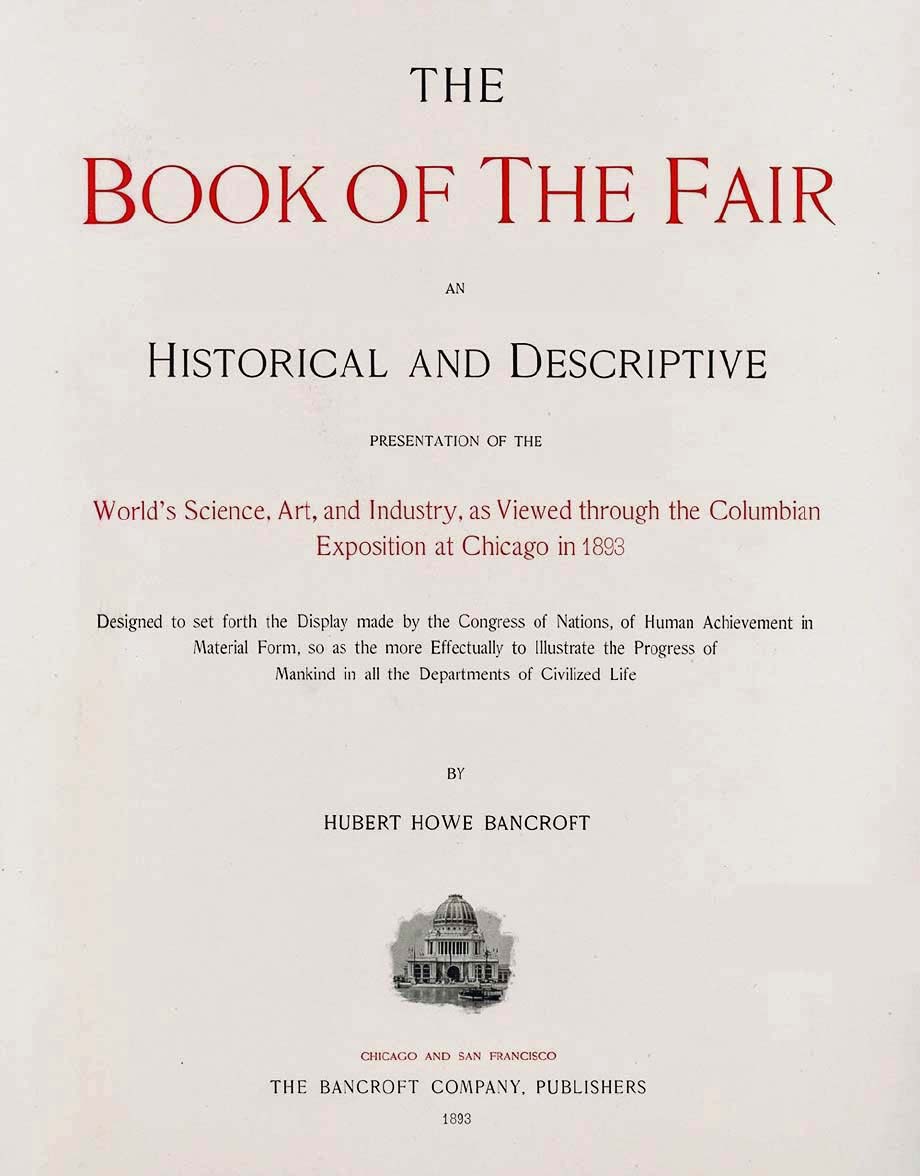Excerpt from Chapter 18: Transportation.
Side by side with the exhibition train of the London & North Western is a full standard train of the Canadian Pacific Railway, built at its works in Montreal, and showing the actual service of the company, with the accommodation furnished to passengers.

At its head is a compound engine weighing 106 tons, with steel boiler carrying a pressure of 180 pounds to the inch.
As with most of the steam leviathans housed in the annex, it is plainly finished, and of sombre hue, the tender painted black, with red facing and gold bordered panel.
The baggage car is of the usual type adopted by the company, strong and solid, as are all the rest.
Next to it is a second class sleeper, with leather covered seats arranged at night as berths, as on the Pullman cars.
Then comes a first class day coach, upholstered in wine colored plush, and finished in Honduras mahogany, elaborately carved, and with tasteful panellings.
Arches resting on columns divide the car into sections without obstructing the view, and give to it a massive appearance.
At either end is a smoking room, of which only the one in rear of the car is used when the train is running.
In the dining car, whose floor is heavily carpeted, are ten tables, with carved bronze alcoves, their seats covered with morocco leather, and with a rounded pillar at the back and end of each.
The sideboard is an elaborate piece of furniture, rounded at the base, with plate glass panels, its handsomely carved octagonal top resting on massive columns.
The last car is a first class sleeper, with ornate and elegant finish, its main body divided into eight sections, and at one end are state rooms with lining and curtains of richly flowered silk, connected with which is a toilet room with plate glass mirrors.
The cars can be lighted either by gas or electricity, and are heated by steam from the engine.
In maps is described the company's route around the world, and in graphic art is reproduced some of the finest scenery on this the most picturesque of American railroad lines.
From the bureau of public roads are also maps and photographs of roadways, bridges, and tunnels, and from private exhibitors collections of railway supplies.
Hubert Howe Bancroft.
1893, The Bancroft Company, Chicago and San Francisco.


